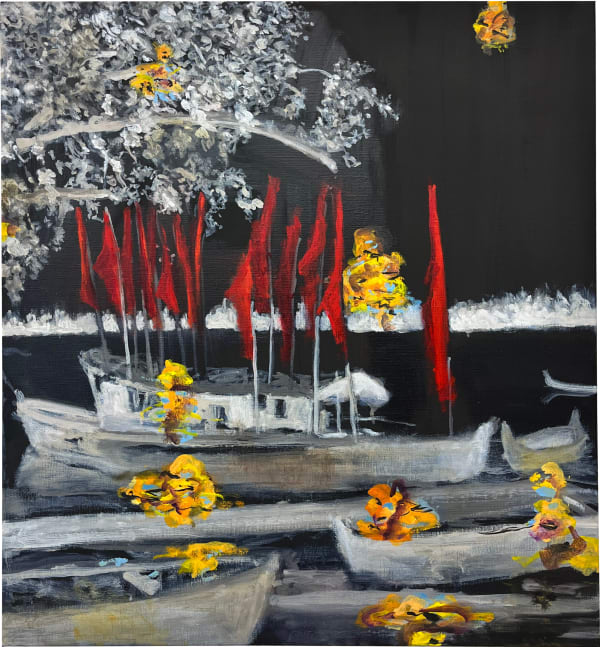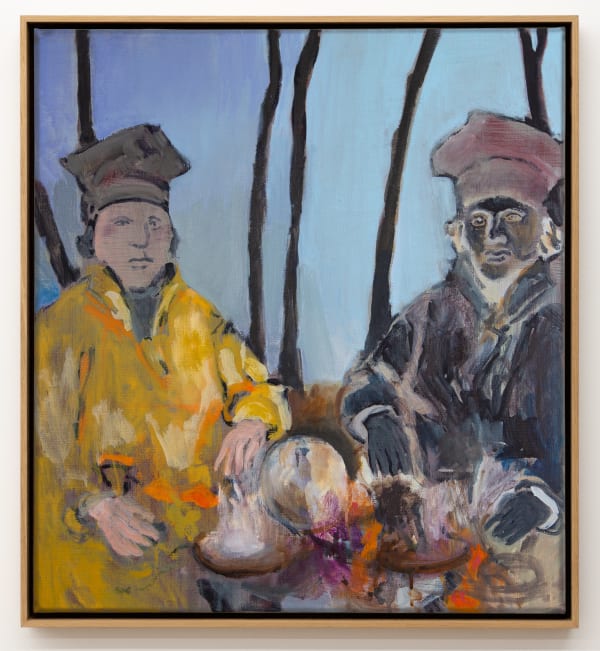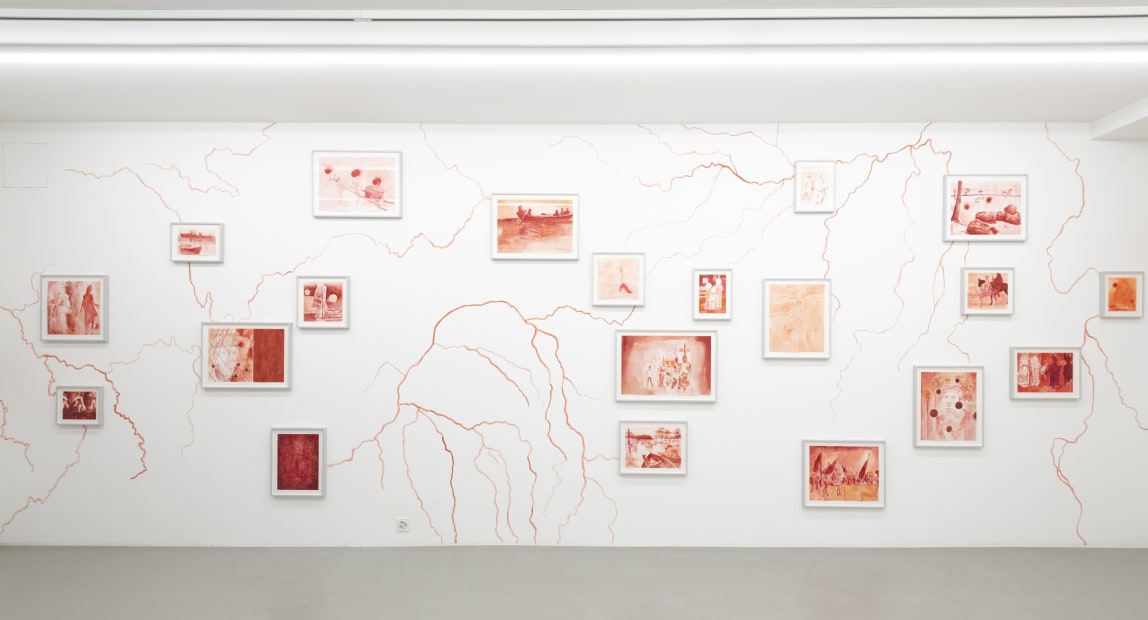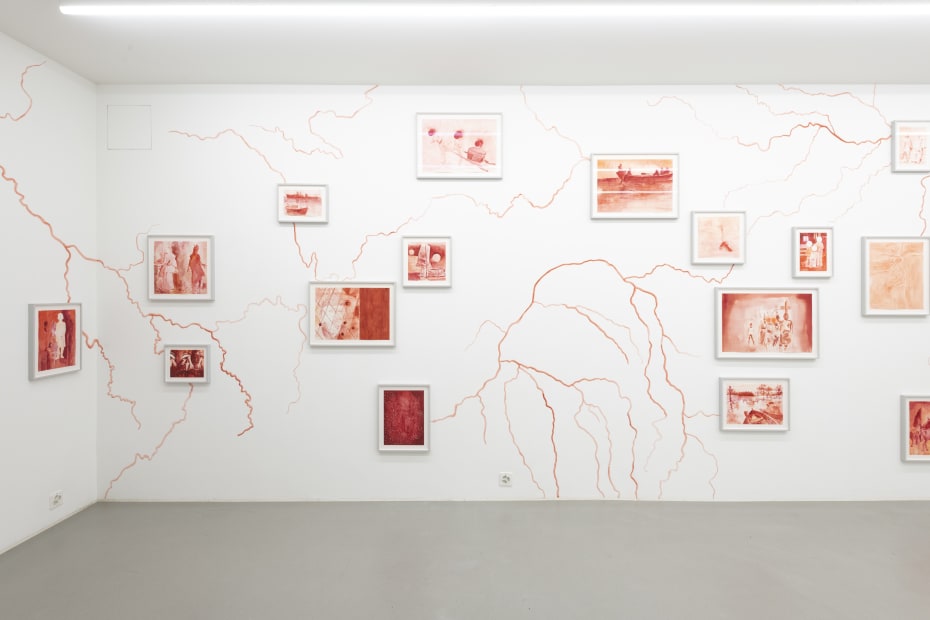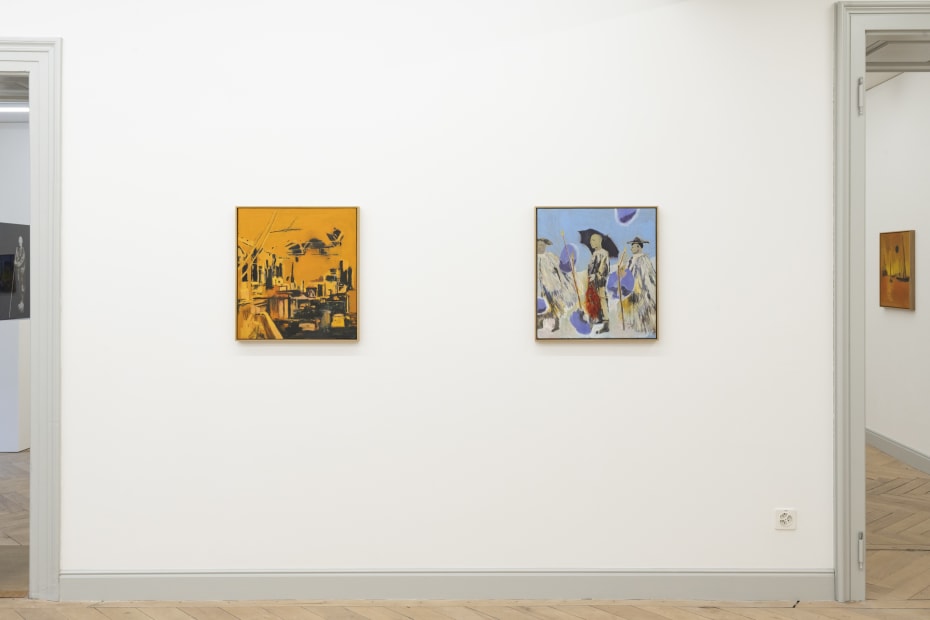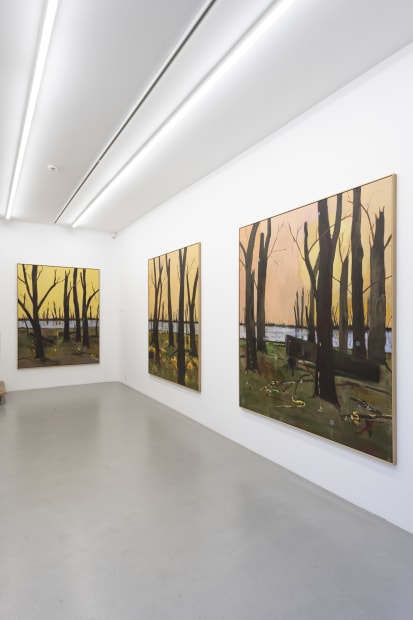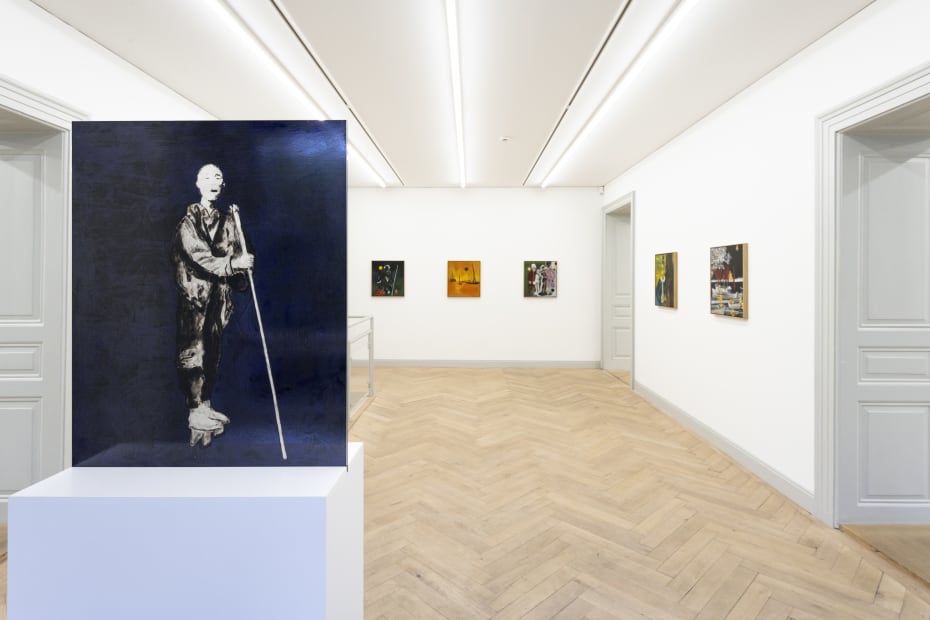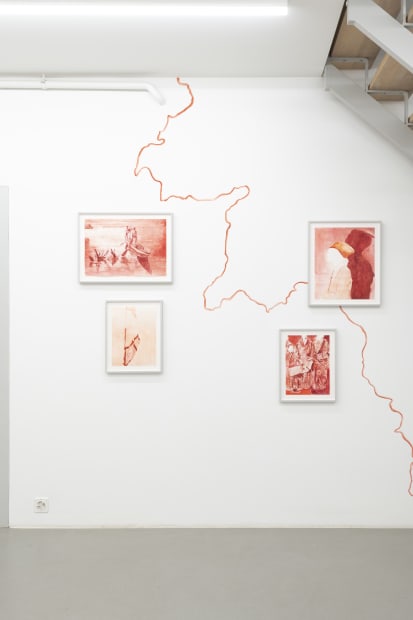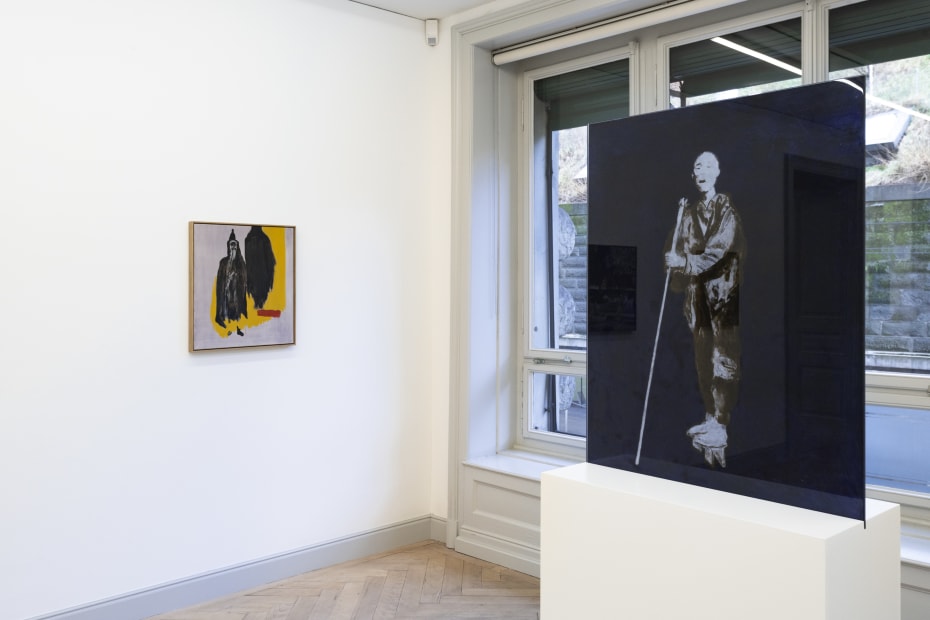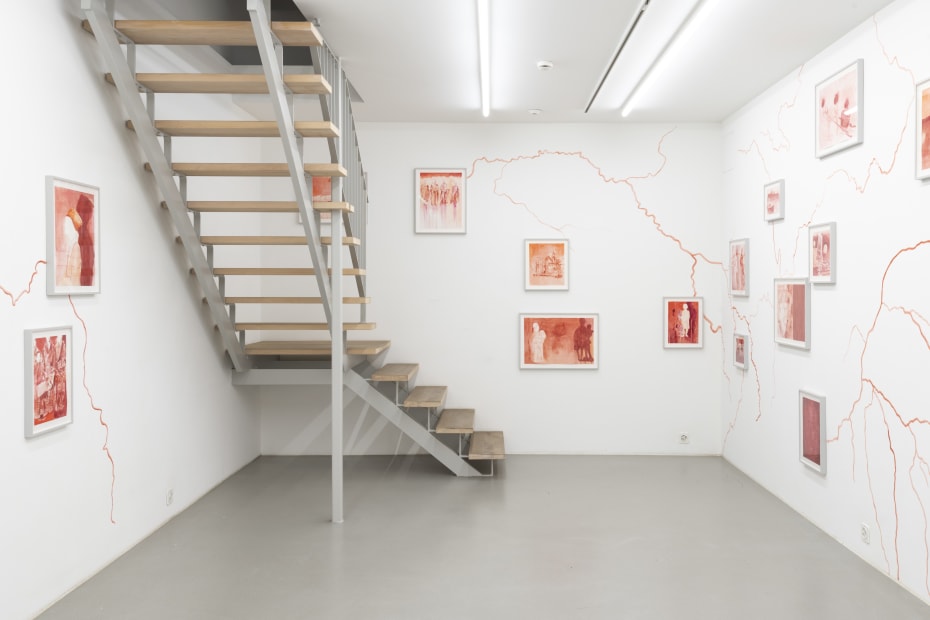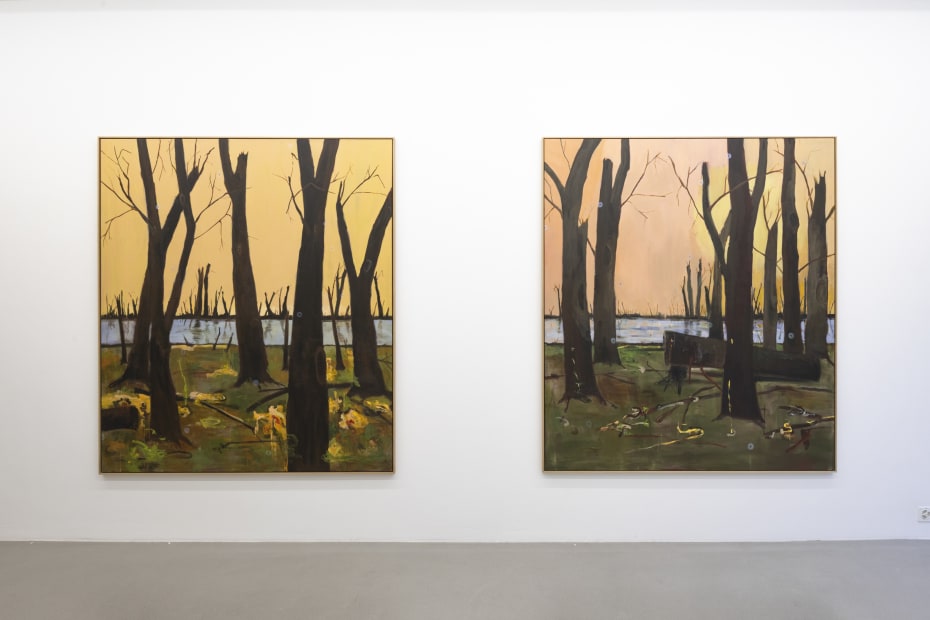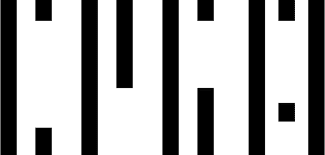Uwe Wittwer: The Blind Singer Leads the WayGalerie Peter Kilchmann
Rämistrasse, Zurich
Uwe Wittwer
The Blind Singer Leads the Way
Jan. 19 – March 29, 2024
Opening: Thursday, January 18, 6-8pm
Rämistrasse 33, Zurich
Galerie Peter Kilchmann is pleased to present The Blind Singer Leads the Way, the third solo exhibition by Swiss artist Uwe Wittwer (*1954 in Zurich) at the gallery on Rämistrasse. The artist’s body of works contain an interweaving of historical and fictional motifs and form a network of cultural references. Wittwer’s inspiration for the latest conceptual paintings and watercolors comes from his in-depth research in historical photo archives.
For this exhibition, he began by researching the Basel Mission Archives and the archives of the Pitt Rivers Foundation in Oxford. The artist was fascinated by the correlation between trade, religion and colonial conquest. In addition to the archetypal motifs, the photographic subjects he discovered offered fascinating symbolic ambivalences, which he reconceptualized and interpreted in the exhibition.
Pitt Rivers (born Augustus Henry Lane Fox, b. 1827 in Yorkshire) was a former officer in the British Navy. After his retirement, he collected a broad variety of colonial goods on numerous trips and through various designated dealers. He bequeathed this monumental collection to the University of Oxford, which used it to found the Pitt Rivers Museum in 1884. At the same time, Protestant missionaries from Basel gained access to potential converts in the colonized areas and formed their own 'empire' of missions. These were a cornerstone of the trading companies that were active in Basel until the 20th century and supplied the local colonial stores.
Three large paintings on the ground floor of the gallery set the basis for the formal and conceptual content. The river landscape that the artist stages in the three works appears to have been affected by natural or man-made events. Barren, presumably devastated forest landscapes have always been part of the artist's repertoire. In the foreground of the compositions are painterly elements, high-contrast brushstrokes that exist in the mannerism of wild painting as a statement about the painterly act itself in the work. Wittwer placed painted foxing spots across the composition of the canvas. These brush-applied circles shape a moment of further abstraction and create an additional layer to the paintings. They form points of contrast that manifest the relationship between reproduction and reality, source material, and pictorial implementation.
In all three works the river depicted flows persistently in the same direction and leads the viewer from the entrance to the gallery to the other parts of the exhibition. Wittwer introduces them to his new works like participants in a historical research expedition by the colonial powers and early modern missionaries. They, too, explored areas still undiscovered by Europeans primarily through these natural transport routes. Initially, loose collections of bases with supplies along the rivers became increasingly dense groupings of ports, markets, and transshipment points. all. Food, mineral resources, cultural goods, and weapons were actively exchanged with the natives or plundered directly from them. Immeasurable quantities of valuable objects and everyday goods flowed toward Europe. It was simultaneously the birth of ethnology and questionable ethnological theories.
On the upper floor of the gallery, eighteen new small-format oil paintings on canvas, mostly portraits, comprise the central part of the exhibition. Reflections, mirroring, and pairings can be found throughout the various oil paintings in the three display rooms. Wittwer reinterprets cracks, incorrect exposure and damaged photo negatives in these works and complements them with surreal elements. In addition to folkloric and historical depictions of Eastern and African individuals, he painted a series of watercolors depicting boats and ships. These are a recurring motif in his oeuvre and have a particularly charged position in this exhibition. Ships and trading boats formed the basis of the geographical expansion of the colonial territories. As a means of transport and as status symbols, they were also a fundamental component for the natives to celebrate their traditions. The artist references this fact in the oil paintings Schiff (Boat) and Charon, amongst others.
Wittwer uses the historical images as templates for collages and edits them with Photoshop. Chopped and displaced negatives exist as mirror elements within positives. The artist places the former ethnological research material in the context of a subjective perception. In the two paintings Winter Day, two women stand like magical figures in an otherworldly landscape. The Flute Player evokes the figure of a Far Eastern version of the Pied Piper of Hamlin dressed in white. The recurring motif of the river can be found painted in red in the black background of the image. Wittwer added selective flame formations along the river. Another painting repeats the motif - only this time the flute player is shown in reverse color - black on white. The artist staged a noble African warrior with a spectral shadow in a type of medallion that was common at the turn of the century. However, the color palate makes the painting appear fresh and post-modern. Another portrait in the form of a collage work shows a Far Eastern nobleman who appears to be sitting in a deep red room, holding his cut-out portrait as a photo negative in his hand. Wittwer balanced the work with a bright blue color plain that he placed as an intervention. He filled in the pendant with yellow-orange paint that complements the blue.
In front of the window in the central room is the glass painting The Blind Singer (76.5 x 60 cm) - the title work of the exhibition. The painting was created by Wittwer in the Mayer'sche Hofkunstanstalt für Glasmalerei und Mosaik in Munich using traditional techniques and careful manual work. The transparent brown-blue work underlines the poetic content of Wittwer's oeuvre. At the same time, the singing protagonist's lack of sight symbolizes the powerful skill to imagine the past and the hidden. Ultimately, the blind singer is a reflection of the viewers who approach Wittwer's work and at the same time of the artist himself, who makes the invisible and the historical visible through his interpretation and realization.
In the basement of the gallery, Wittwer installed a mural that runs through the entire room. With various elongated lines in red color, he replicates the courses of the various rivers that the colonial traders and missionaries navigated at the time of their expansion. The rivers formed the nexus in which the Western colonizers carried out their activities and in which they encountered the subjects of their photographs. The murals depict, for example, the Amur River in Manchuria, the Yangtze, the Mekong, the Amazon, the Senegal, the Congo, and other important rivers that led to the subjugation of the respective natives by the colonialists. The red color points to Wittwer's interpretation of the rivers as the blood vessels of this development. The transportation of cultural treasures took place primarily in a geographical direction and nourished the colonialist empires in an economic and cultural-historical way.
Wittwer placed over twenty monochrome watercolors in various small formats with the uniform title Die Mission / The Mission in a salon-like hanging between the painted rivers. They continue the motif of the ever-present red color. The scenes in the monochrome works look like blurry negatives and positives that were taken directly from the rich fund of the two photo archives. However, the reduction of color and the collage-like compositions create a distance from the source material through their abstraction. Painted foxing and scratches carried over from the negatives, refer to the ambiguity between painting and reality. Wittwer for instance stylizes them into stars in various night scenes, and scratches become abstractly painted tree trunks. Boats and ships recur as motifs. A group of African envoys appears to float in mid-air through the composition but meets a delimiting painted beam as a barrier in the upper half of the picture. Children in folkloric costumes play with dolls and shadowy shapes. The captured scenes with children also served to reveal the human aspects of the colonial and ethnological activities of Pitt Rivers and the Basel missionaries. Sources report that Pitt Rivers always recognized himself in the children caught on camera. Through the wet gradients and the continuation of the doubling, the subjects of the various painted subjects appear as images that make the period of colonialism seem like a strange dream.
Uwe Wittwer's works have been exhibited internationally since the mid-1980s. Past solo exhibitions include: The Mission, Parafin, London (2022), Schwarzer Schnee, Judin, Berlin, Holzhacker.Spiegel, Galerie Peter Kilchmann, Zurich; Settings of Wrath, at the Musée Ariana in Geneva (all 2021); The Black Suns, Grenchen Art Museum (2019); The Spoils of Ward, Judin, Berlin and Shelter, Galerie Parafin, London (2018).
Important group exhibitions took place in the following institutions, among others: Gewerbemuseum Winterthur, Winterthur (2023); Szydlowksi Gallery, Warsaw (2023); Centre PasquArt, Biel (2022), Parafin, London (2022), Kunstmuseum Solothurn (2021); Kunstmuseum Bern (2019); Herbert Art Museum, Coventry (2018); Langmatt Museum, Baden (2017); Abbot Hall Art Gallery, Kendal (2013); Kunstmuseum Solothurn (2013); Tate Britain, London (2011); PS1 MoMa, New York (2006). Wittwer's works are in the collections of international institutions such as the Metropolitan Museum of Art, New York; the Caldic Collection, Rotterdam; the Kunsthaus Zurich; Sammlung Ludwig, Aachen; the Bern Art Museum; the Solothurn Art Museum; the Bonnefantenmuseum Maastricht; the David Roberts Art Foundation, London; the Musée d’art et d’histoire de la Ville de Neuchâtel, Neuchâtel; the Center PasquART Biel; Museum zu Allerheiligen Schaffhausen as well as the collection of the ZKB Zürcher Kantonalbank and many more.
For further info about the exhibition please contact Fabio Pink: fabio@peterkilchmann.com

